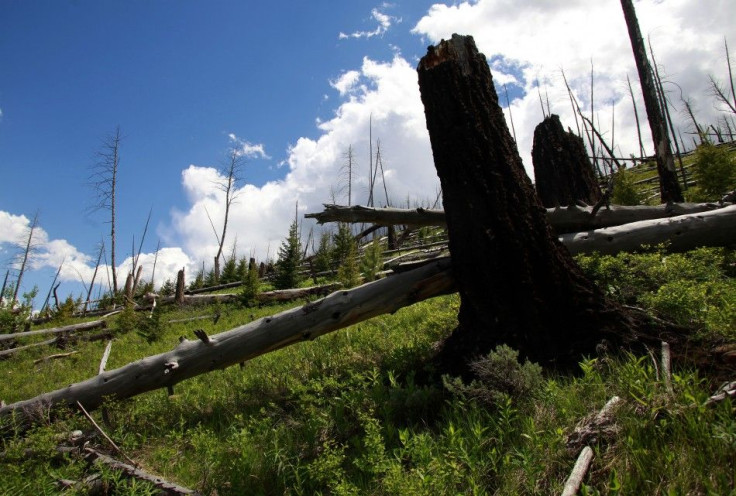Yellowstone Set for Transformative Wildfires as Climate Changes

On Monday a new study was released that claims climate change is likely to cause more frequent wildfires that could completely transform the forests and ecosystem of America's iconic Yellowstone National Park.
Straddling the states of Wyoming, Montana, and Idaho, the landscape of the park is dominated by dense forests of narrow lodgepole pine trees. However, that may soon change. The recently released study suggests that more open spaces, grasslands, and forests of other types of fir trees and shrubs could characterize the park sooner than you may think.
READ ALSO:
America's Best National Parks You've Never Heard Of
Stunning New Photos of Yellowstone National Park
Grizzly Bear Kills Yellowstone National Park Hiker
These finds are the result of a study published online in the July 25 edition of the journal Proceedings of the National Academy of Sciences.
It argues that years when no wildfires break out will become a rarity by 2050, and by 2075, ravaging fires will become the norm.
"What surprised us about our results was the speed and scale of the projected changes in fire in Greater Yellowstone," said Professor Anthony Westerling of the University of California, Merced.
"We expected fire to increase with increased temperatures, but we did not expect it to increase so much or so quickly. We were also surprised by how consistent the changes were across different climate projections."
The authors of the study made the forecast by examining climate data from 1972 to 1999 and creating a statistical pattern by combining the data with figures on the size and frequency of Rocky Mountain fires greater than 500 acres (200 hectares) in the same period. Then, they predicted how climate change of up to one degree Celsius annually, combined with earlier snowmelt, would affect fires in the park through 2099.
Yellowstone National Park is no stranger to wildfires.
A devastating fire broke out in 1988, devouring 1,200 square miles (311,000 hectares) and affecting over one-third of the national park. While fires do occur in the park with regularity, the study argues that, in the coming years, the time frame for which the fires will occur will increase dramatically.
"Large, severe fires are normal for this ecosystem. It has burned this way about every 100 to 300 years, for thousands of years," said co-author Monica Turner of the University of Wisconsin, Madison.
"But if the current relationship between climate and large fires holds true, a warming climate will drive more frequent large fires in the Greater Yellowstone Ecosystem in the future."
If the lodgepole pines that blanket the park do not have enough time to recover between blazes - and experts say this process can take up to 90 years - they will likely be replaced by faster-growing shrub varietals and trees like the aspen and Douglas fir. Not only will this drastically change the environment, but it is sure to affect the wildlife and entire ecosystem too.
© Copyright IBTimes 2024. All rights reserved.






















